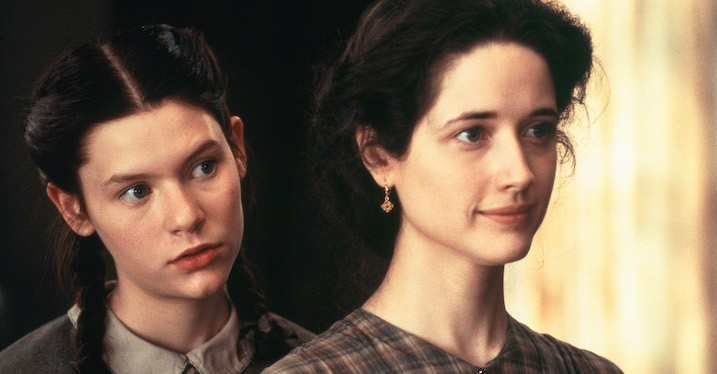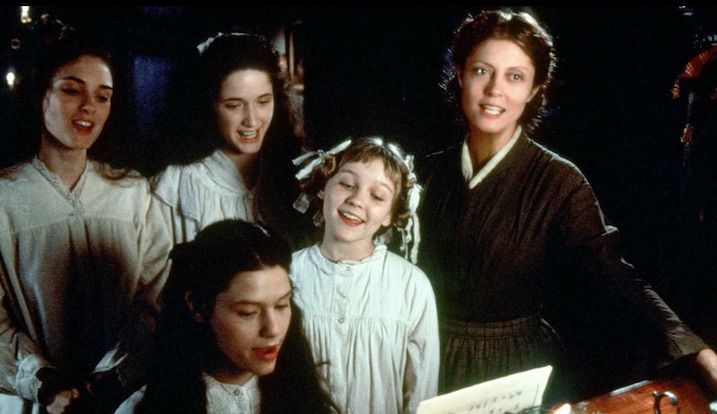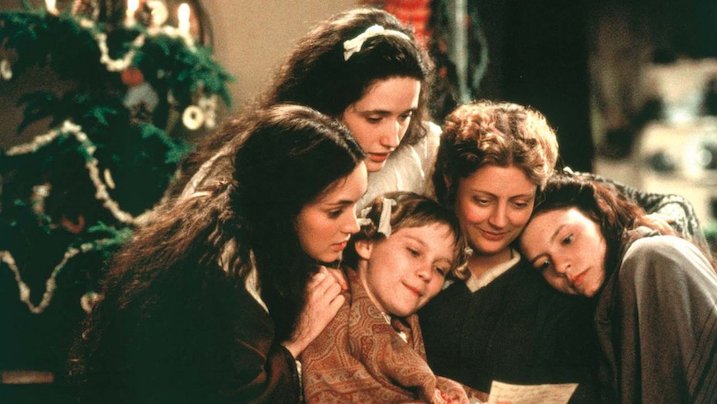Little Women ’94 (4K Dolby Vision Digital Review)

Twenty-five years after it’s release, director Gillian Armstrong’s Oscar-winning box office hit, Little Women, receives the 4K treatment – and even better, one with Dolby Vision. In theaters this holiday season, we have Greta Gerwig’s fantastic reimagining of Louisa May-Alcott’s classic novel while at home, we have the version that starred Winona Ryder, Claire Danes, Susan Sarandon, Christian Bale and Interview With The Vampire-aged Kirsten Dunst. This is the definitive millennial version of the book: broad-humored, over-the-top, not at all subtle. And yet, Armstrong’s wise decision to double down on such a take is what makes the film so memorable. The tricky thing, as far as transfers go: many late early 90s movies suffered from a weird flat film stock look. Can this new 4K version elevate the visuals? Yes. Mostly, yes.
Film:




For those new to the tales of the March sisters, a quick summary: Set in Massachusetts at the end of the Civil War and beyond, four “little women” grow up with nary a care in the world except their concern for their father who is off fighting the good fight. Josephine or “Jo” (Winona Ryder) is the oldest of the siblings. She wants to be a writer and isn’t so sure about just marrying some man. Conservative-minded Meg (Trina Alvarado) dreams of the stage and a husband. Fragile Beth (Claire Danes) loves music yet is not in good health. Amy (Kirsten Dunst/Samantha Mathis) wants to be an artist but is better as a troublemaker. Christian Bale plays their handsome, wealthy neighbor Laurie. And Susan Sarandon plays their forward-thinking mother.
As far back as the silent film era, this story has been made over a dozen times. In 1933, Katherine Hepburn played her generation’s Jo. Director Gillian Armstrong’s 1994 version garnered Winona Ryder a Best Actress nomination as well as other nominations for Colleen Atwood’s costume design and Thomas Newman’s score. Little Women is a beloved novel that has been able to find relevancy in each age.
Recently, I saw Greta Gerwig’s version (check out my review!) and loved it. I hadn’t seen this version since its release in the 90s. As such, beyond loving how good the 4K transfer was, I was very aware of the changes between 2019 and 1994 versions. The 90s version is a more faithful rendition, as the story is told chronologically. In contrast, the ’19 version has a clever use of time to go back and forth in the narrative.
This version is also less meta. While Ryder is headstrong, charming, and engaging, she can seem to be unstuck in time in her ideas. Saoirse Ronan’s Jo, in the ’19 version, is like this too, but there’s an added layer of the audience being aware of gender politics today. Both actresses are terrific though I think I’d give the edge to Ronan.
More comparisons can be made. I love seeing Dunst as the bratty, rage-filled Amy, much like her portrayal of Claudia, the child vampire from the same year, in Neil Jordan’s Interview With The Vampire (speaking of when is that 4K coming?). Although I’m not sure having two actresses to play the part of Amy works (as the older Amy, Mathis is merely fine). Florence Pugh, who plays Amy throughout the entire ’19 version, is better. With Amy as the only character who has two performers in the ’94 version, it comes off as odd. Also, as much as I like Dunst, Pugh imbues Amy with more empathy towards the character. When she burns up Jo’s writings early on, we see Dunst as more of a little monster than a woman, but Pugh makes us feel for her. It’s a slight tweak but more effective.
Still, this is a terrific adaptation of the book. Many who grew up with it will love the more blunt, big tone of it all (although some of the line readings can feel like the best-produced high school play). The way it ends could potentially make modern viewers roll their eyes, but I would bet if you were a teen when you first saw it, your eyes would more likely get watery.
Video:





- Encoding: HEVC / H.265
- Resolution: 4K (2160p)
- Aspect Ratio: 1:85:1
- Dolby Vision: Yes
- Clarity/Detail: About halfway through, there’s a great close-up of a white teacup that Amy has painted with blue paint. It’s crisp, vibrant, and a great example of how good the detail can be.
- Depth: A feeling of “everything looks like a set” is present, but that is typical of the mid-90s period pics. I wish the wood worn March home had more spacial depth, but I’m sure this 4K transfer is faithful to the original negative.
- Black Levels: Black levels are good although this is mostly a well-lit period drama, so not a lot of stark compositions to show off deep blacks.
- Color Reproduction: Though not as textured as say, this year’s Little Women, this transfer offers shows off occasionally excellent colors.
- Flesh Tones: Natural and rendered well.
- Noise/Artifacts: None were present that affected the viewing experience.
- Bonus notes on picture quality: As I was traveling home for the holidays, I actually saw this film in three different formats. First, my 55″ LG OLED 4K, then on my flight an iPhone X Max, and finally, on my friend’s 65″ Samsung 4K UHD. Yes, the blacks are best on the OLED, but the Samsung offered bright color details, and the iPhone was solid.
Audio: 





- Audio Format(s): 5.1 Dolby Digital
- Subtitles: English
- Dynamics: Dialogue is easy on the ears. The feeling of relaxing in 1868, Massachusetts, whether in the March home or the hustle and bustle of a carriage ride is well-balanced.
- Low-Frequency Extension: There’s not a lot in the way of low booms or big powerful sound design as this is not Michael Bay’s Little Women, but no issues were found.
- Surround Sound Presentation: 5.1 speaker set-up is strong. Sounds excellent even through a soundbar too.
- Height: Thomas Newman’s score filled the room in a big yet never an overwhelming way.
- Dialogue Reproduction: The fun banter between Jo and the rest of the March posse is clean and crisp.
- Bonus notes one audio quality: As I was traveling for the holidays, I listened to Little Women with three different audio set-ups. First, my Sony Soundbar then on my flight an iPhone X Max with Sony Noise-cancelling headphones and finally, with 5.1 Denon. Every format was excellent.
Extras: 





As a reminder, this review is based on a digital code provided by the studio, not a physical disc. These were the extras on iTunes.
- Director’s Commentary – Armstrong offers an insightful look at the making of this classic 90s movie.
- Making of Little Woman (SD, 6:51) – A short, pretty standard making-of featurette.
- Deleted Scenes (SD) – These two scenes are presented with and without director Gillian Armstrong’s commentary. They are “Jo Teaches French to Kids” (:51) and “Marmee Comforts Beth” (:50).
Summary:





As the Invasion of the Body Snatchers of the YA genre, fans will argue about which version of Alcott’s novel best represents the source material. Does each one accurately reflect the era they were made? Or simply, which film has the best ensemble? If Armstrong’s take from the mid-90s is your jam, this new 4K release is the way to go. You’ll be transported to the 19th century, hanging a spirited sisterhood that didn’t really travel (and most certainly not with pants!) but endeared themselves to a generation of readers and viewers. Now, if we can just get a script written for an 8K version for Michael Bay to envision…
Find Your Copy Here



















